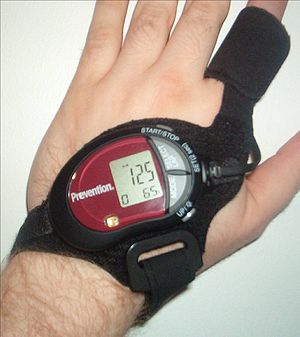| English: Untidy Desk (Photo credit: Wikipedia) |
Are there papers scattered all over your desk? Do
you look for your car keys every day? Do you know, at this moment, where every
single thing in your life is?
Your life can be completely organized with one
single rule: put everything in its home. It’s a habit I’m trying to teach to my
kids, so I don’t have to keep picking up after them all the time, and because
it’s one of the most useful habits I’ve ever formed.
• Have a system. Put all incoming papers in your inbox (at work and
home). Process that inbox, either doing the tasks, putting them on a to-do list
(and in an action folder), filing them, forwarding them, or trashing them. With
this system, there’s never any question as to what to do — you’ve got a limited
set of options.
• Find a home: If you’re about to put something down on your
countertop, or table, or desk, or toss it on your couch or bed, think about this: is that where it belongs?
Where is it’s home? If it doesn’t already have a home, find one. Designate a
spot for that item or type of item. Car keys? Have one place where you put the
keys, all the time. Dirty clothes? They don’t go on your bed. Handcuffs? Put
them in that special box in your closet marked “Taxes”.
• Simple filing
system: Once you’ve
processed papers out of your inbox, you’ll need a place to put them if you need
to reference them later. Don’t have a bunch of files stacked somewhere — create
a simple filing system (alphabetical is easiest, although you could sort by
hexadecimal instead if you’re a geek). Always have blank labels and folders on
hand so you can quickly make a new file if needed, and don’t be afraid to make
new files. Never have a Miscellaneous file. You might as well call it the
Procrastination file.
• Put
it away immediately. Yes, I know, you were going to put it away later. It’s
just sitting there until you can get to it. Well, after awhile, “later” creates
piles and messes. Don’t wait until later. Do it now!
• Make
it a habit. Putting things where they belong is not something that’s going
to happen overnight. You’ll forget, or get lazy. To really make it stick, you
need to focus on that habit for 30 days. Do a 30-day challenge, concentrating
your energy on it until it becomes automatic.
• Pay
attention to transitions. The time between when you’re doing one thing and
when you’re doing the next thing is a transition. This is the time when you
should put stuff away where it belongs and clean up your mess, but it’s also a
time when we’re not thinking about that stuff and only thinking about what
we’re going to do next (or the next episode of Gilmore Girls). While you’re
working on your Everything In Its Place habit, pay close attention to
transitions. Awareness of these transitions will make it easier to remember to
put things away.
• Keep
flat surfaces clear. Never toss something on a countertop, table, desktop,
bed, dresser top, coffee table, or the floor. If you do, catch yourself, and
find another home for it. In fact, while you’re at it, clear off all these flat
surfaces, tossing half the stuff and finding homes for the rest. Ahhh! Isn’t
that nice? Who knew there was a desk under there?
| Desk (Photo credit: tigerweet) |
• Evaluate.
Every now and then, it’s good to review your organization of everything.
Sometimes, it doesn’t make sense to have something in one room when you usually
use it in another. Sometimes, it’s good to get three pairs of scissors if you
use them frequently in three different rooms. Sometimes you need to declutter
or re-organize a drawer or closet. Revisiting these things periodically will
help keep things together.
If you ever lose a thing again, go back to
the above tips, and work on them some more. If you never lose a thing again,
think about how much time and money you’ve saved. If that happens, feel free to
send me a check.
This post has been adapted from the ebook Zen
To Done by Leo Babauta. Leo writes his thoughts on productivity on the
famous blog Zen Habits. I’ve benefited a lot from his blog and highly recommend
it to you! You can subscribe to the posts
here(via RSS or email).
Related
Posts
Learn The Simple Tricks To Spam-Proof
Your Emails





